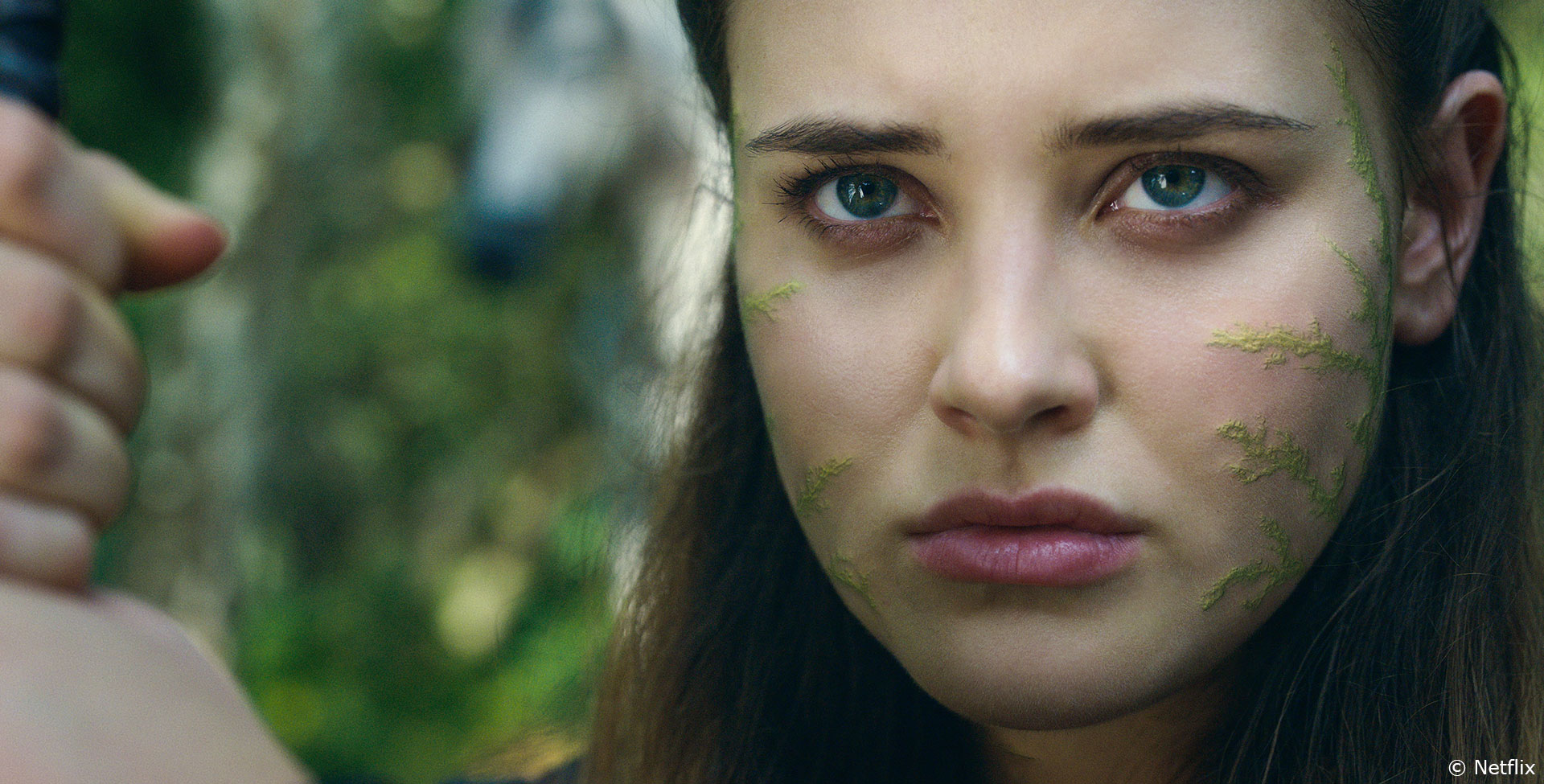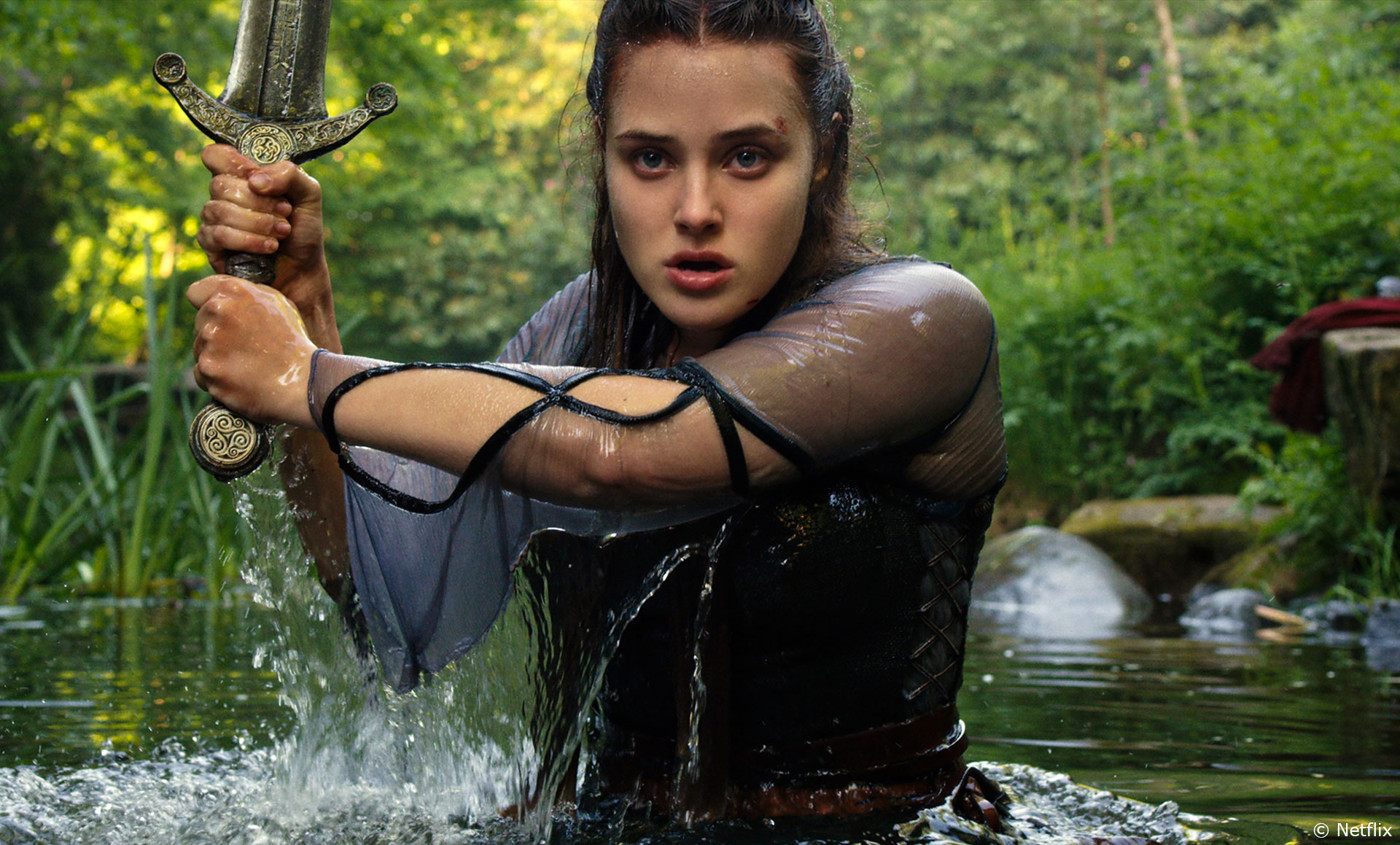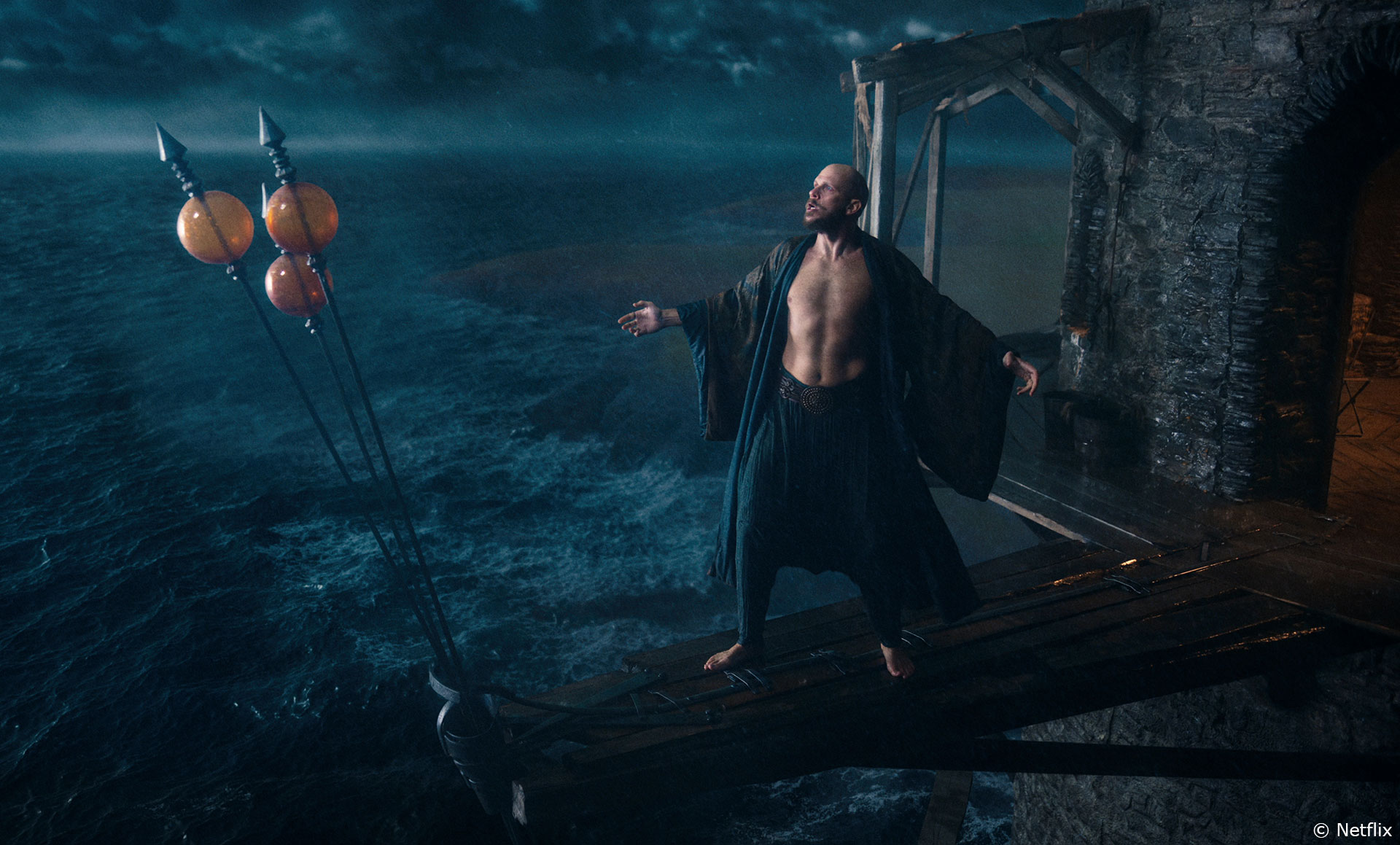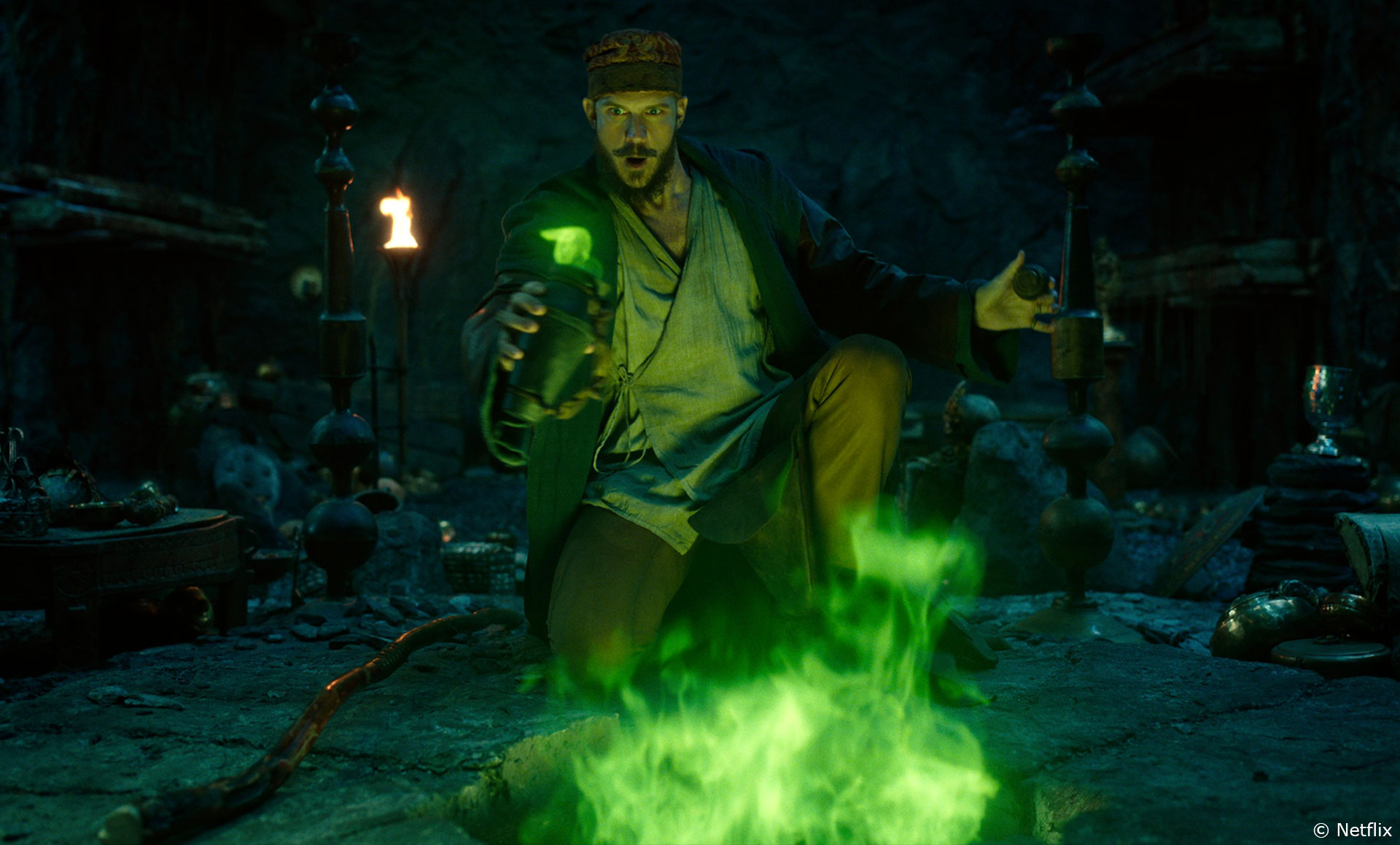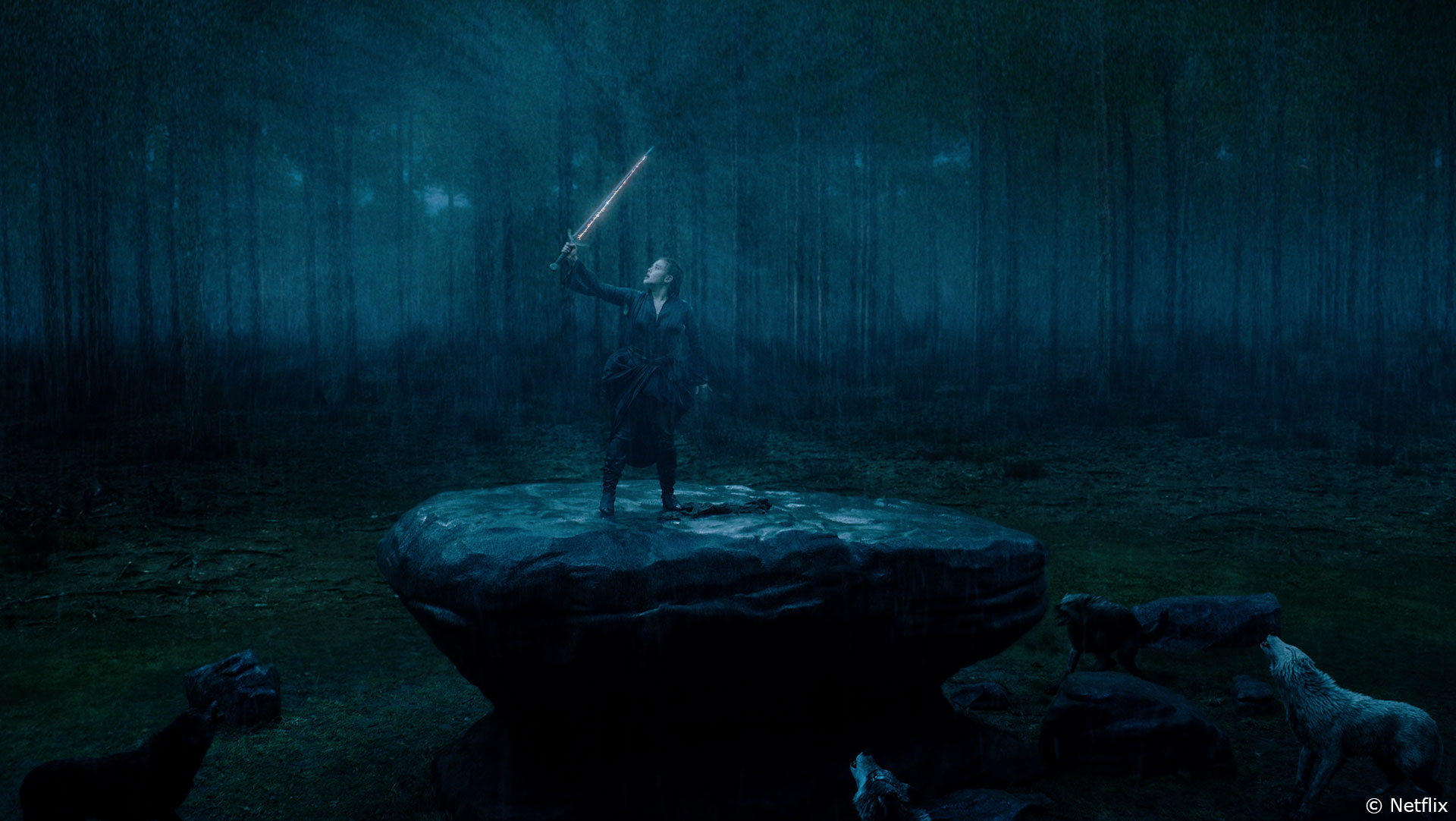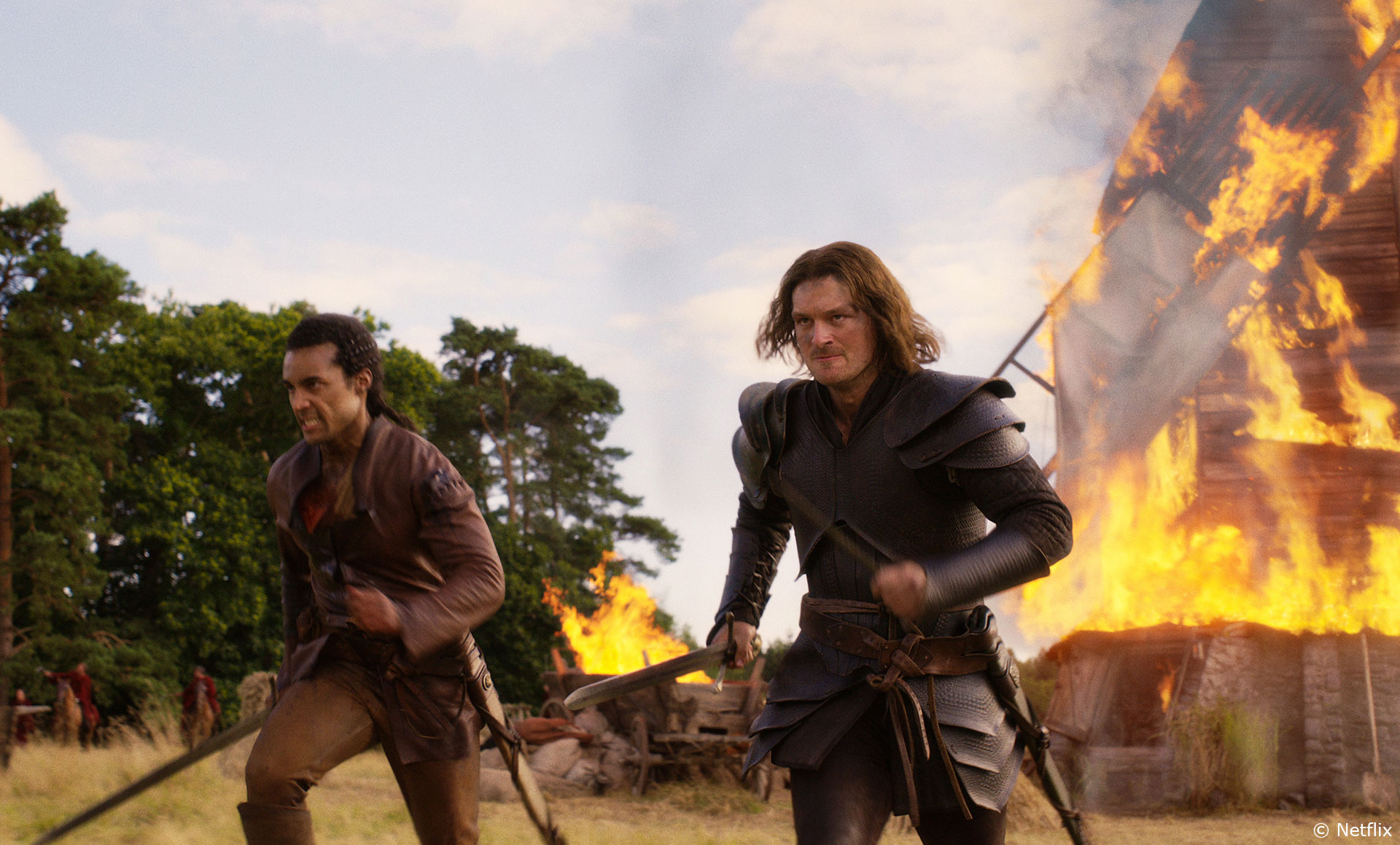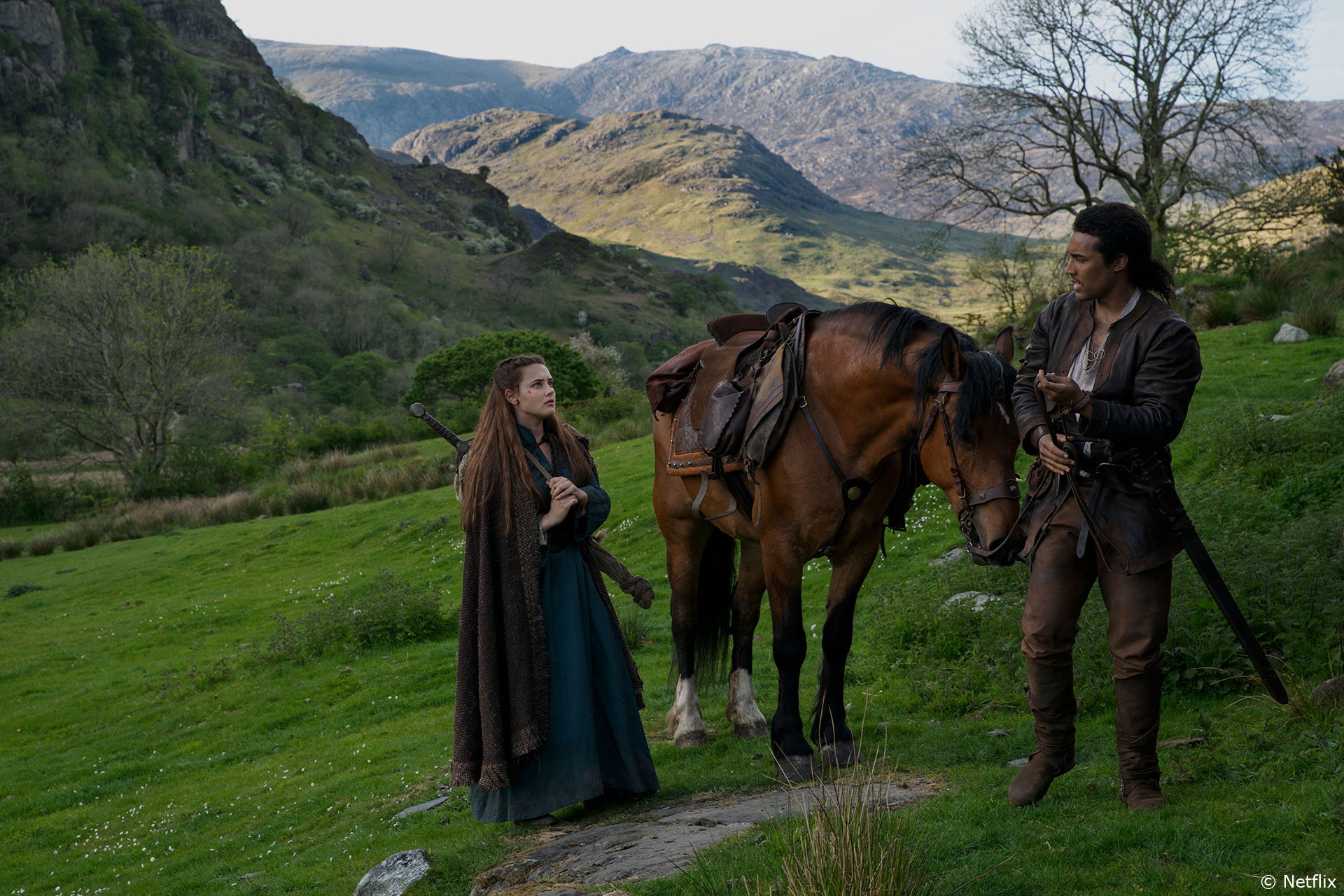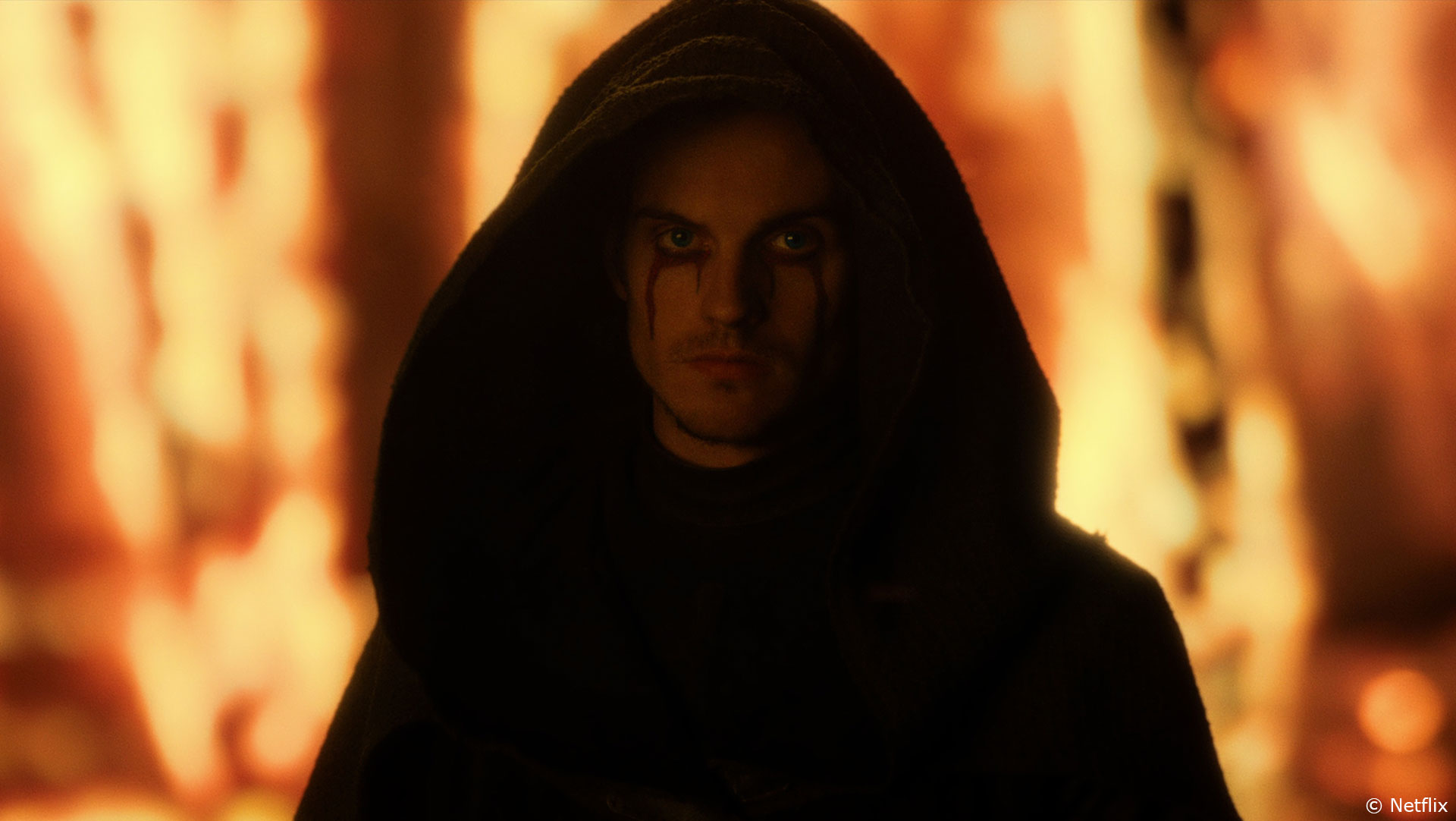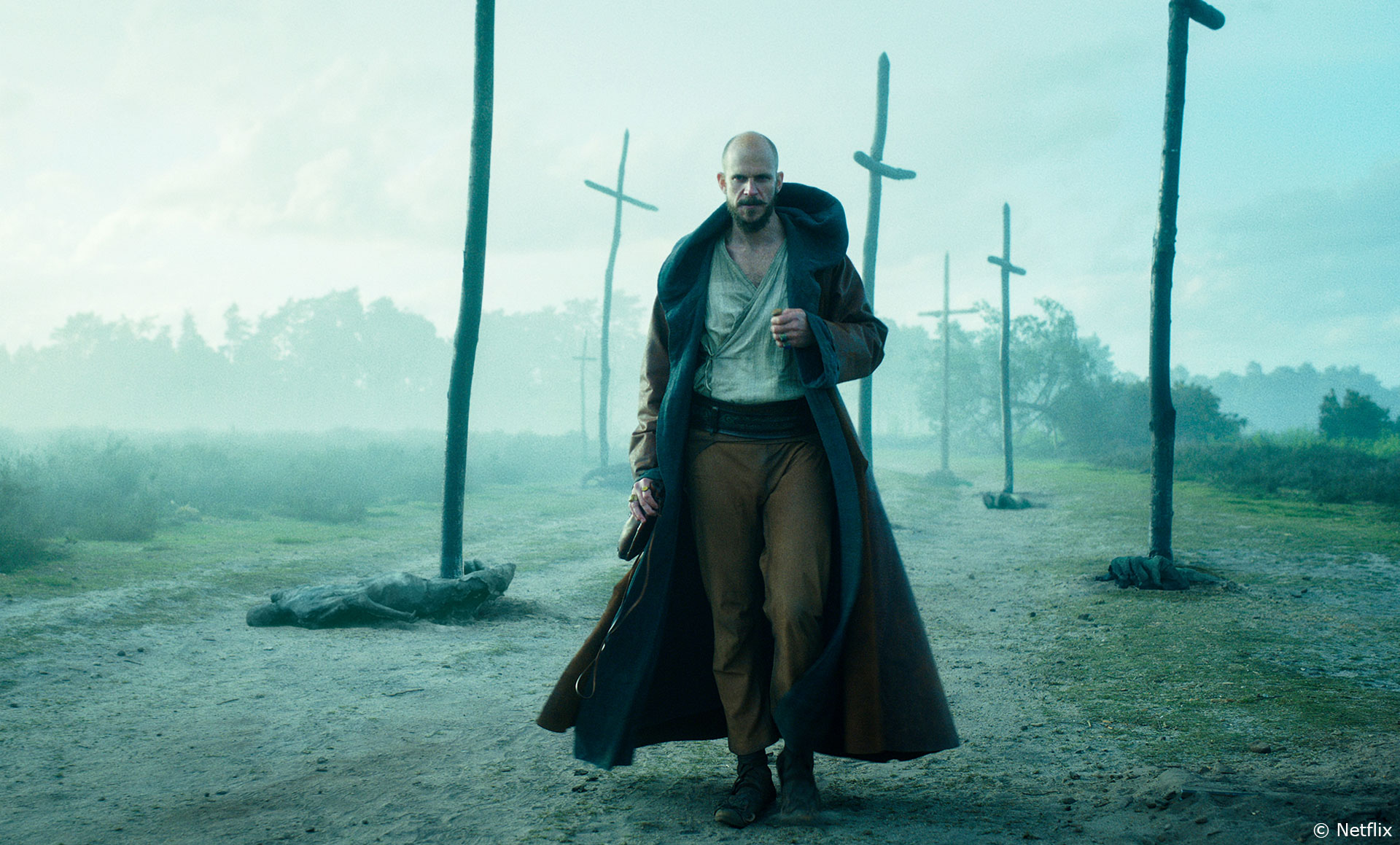Dave Houghton has been working in visual effects for over 20 years. He has worked on numerous projects including TORCHWOOD, DOCTOR WHO, SINBAD and THE ALIENIST.
How did you get involved on this show?
I was interviewed for it. I had some contact with Netflix in the UK beforehand. I have been a Frank Miller reader since the 1980s and was keen to work on the project as I was aware of Frank’s involvement.
How was the collaboration with the Showrunners and the various directors?
Shows like this don’t get made without all the departments collaborating together. I would break down the scripts for VFX with basic breakdowns of how to achieve all the VFX sequences. All the departments would do something similar for their own work. Then we would sit down together and work out how to achieve the work suggested by the script, Tom and the directors and which department would be doing what. Practicality and budget always drive these decisions based on the most aesthetically pleasing solution.
What was their expectations and approach about the visual effects?
Expectations were high, VFX were essential in creating the world Tom and Frank had created in the book. We were looking at creating creatures that although based on real rather than fantasy creatures still required to interact with the actors in ways unachievable practically, also some of the environments were either wholly or partially to be created by VFX to enhance the fantasy elements in the world of CURSED. VFX were also responsible for the elemental magic which is seen throughout the show.
How did you organize the work with your VFX Producer?
I brought in the VFX Producer, Rebecca Vujanovic, in pre-production. While I broke down the scripts, prepared for the shoot and looked at vendors, she helped with all of these things as well as setting up our VFX team, which consisted of a data-wrangler, and at it’s peak two coordinators and an assistant, as well as a VFX editor. Rebecca worked closely with Sean Santiago’s Netflix VFX team to ensure financial expectations were always clear and conveyed to Production. Over the course of the Production Bek and I worked very closely together to achieve the final results.
How did you work with the art department to design the castles and magic?
As the castles in the show were rarely seen in vision with the live action VFX ended up designing them. We used concept artists at the vendors working with myself, Frank, Tom and the Directors to find the look of the castles. These designs were influenced by the look of the sets that art department were producing, on extant castles in the UK, like Raglan and Harlech with some impossible flying buttress elements introduced to heighten the idiosyncratic nature of the castle. The same for the magic also. VFX developed the look of the magic very much based on elemental forces like fire, water, lightning etc. I worked with the Erika Ökvist the make-up, hair and prosthetics designer and Freefolk to create the vines on Nimue’s face and other enhancements added to certain of the Fey characters.
What was the main references and influences?
Frank’s work was a big influence. Although unlike films such as 300 or SIN CITY we tried to integrate it into a real world aesthetic based on mediaeval and ancient architecture and landscape over a period from about 500AD to 1100AD. On a less obvious level STAR WARS and the HELLBOY movies definitely fed into it. There’s a real elemental aspect to the magic in the film EXCALIBUR that was also something we tried to introduce to the show. Arthur Rackham’s fairy images influenced the Fey and the look of their magic, Piranesi’s etchings influenced the look of the Pendragon castle as well as Culzean Castle and the Cailleach tombs, John Martin’s work influenced the vast underground caverns that appear in the Lair of the Leper King and the Cailleach tomb. I have quite an extensive library of real world photographs, film, comics, art and literature that I dip into as reference.
Where was filmed the various parts of the series?
The series was filmed in studios in Langley and at our backlot at Deepcut in Surrey, where the Hawksbridge and Gramaire town exteriors were built. We shot a great deal of location work in North Wales around Betws Y Coed, Devon and Surrey too.
Were you able to use some of the ruins as a base for some of the castles?
Although I have an extensive photographic collection of British castles, taken before I was on the show as well as during the shoot, we didn’t in the end shoot in any, although we did recce a couple in pre-production but certainly for me Raglan Castle and Harlech Castle both in Wales were very influential.
Can you explain in detail about the creation of the various castle and environments?
Our main castle was Pendragon Castle. This was designed and built by Goodbye Kansas, one of our vendors. It was built as a full CG model with projected textures for the angles we used. Originally it was going to be located on Worm’s Head on the Gower peninsula in Wales but there were safety issues filming there so instead I shot some plates of cliffs in Devon with a drone crew while we were filming live action on the beach below. So in most cases the castle is a full CG build on a live action background plate. We used a lot of photogrammetry and lidar scans on the show. Most of the environments we created used elements of this to some extent for verisimilitude.
Can you elaborates about the storm sequence with Merlin on top to Pendragon castle?
This was shot on the second day of principle photography in the studio on a partial set of the tower with a green screen surround. We had practical rain effects and lighting lightning effects. The sequence was storyboarded before hand. Merlin’s gangplank was about 4ft off the ground and the tower set itself was about 20ft high. Freefolk, one of our vendors, then added in the castle set extension, CG storm and sea, adding lightning bolts in time with the practical lighting effects.
Which one was the most complicate to create and why?
Tough question as there were some very tricky sequences throughout, some requiring integration of multiple passes using CG elements to combine and enhance them, some required complex CG environments and animated creatures combined with atmospherics and live action. The first shot of the Weeping Monk in episode 1 was a complex VFX shot as everything in it was CG created by Freefolk apart from the Monk himself. The forest, the flames, the moonwings all CG. Rendering times were long as the shot lasted about 40 seconds but there was also the 70 second Steadicam shot through the village of Dewdenn as it is being sacked by the Paladins, this required flame, ash, embers and smoke, as well as distant mountains added into a Steadicam shot moving through a village in a forest location full of stunt persons and supporting artists fighting it out with minimal practical flame SFX, the amount of rotoscoping alone was a challenge. The wolf sequence in episode 1 and the bridge sequence in episode 10 were equally complex.
The series is full of magic. Can you elaborates about this aspect?
The magic was discussed at the very beginning of the process in terms of how it should manifest itself. Frank and Tom were very clear they wanted it to be elemental in nature rather than a more kind of sparkly magic. Storms, flames and sinewy animated vines would represent much of the visible magic.
Can you explain in detail about the creation and animations of the magical effects?
We filmed practical elements and used fluid sims created in Houdini for most of the magical effects. The vines were sometimes procedural sometimes animated, depending on what we needed them to do. It was more about creating a magical atmosphere as opposed to say for example a blast of magical energy from a magic wand.
How did you create the various animals such as wolves and spiders?
The wolf sequence was one of the most complicated of the series. Initially Production wanted to explore using live wolves. With a TV show the time to shoot these scenes is always short and trying to get the performances we needed would have been too time consuming and would have involved trying to combine multiple passes of live action which was never going to work in the time and with the desire for movement in the camera. Ideally we would have pre-vised this scene but unfortunately there just wasn’t time. Milk, one of our vendors, came up with a lovely pitch document with concept work for this scene and in the end we worked quite closely to that. I worked with Steve Dent the stunt coordinator at his farm to choreograph the sequence and then we shot it in the studio on a partial set of the forest clearing with the rock Nimue stands on, we had stunt men fetchingly attired in green lycra playing the wolves for Katherine Langford to play off, SFX wind and rain and lighting lightning effects. Milk then had to add in the CG wolves, CG forest environment, storm clouds, rain, blood etc.
Can you explain in detail about the bear attack sequence?
I discussed the bear scene extensively with our director Zetna Fuentes, the scene was storyboarded but as with the wolves we didn’t really have time to pre-vis the sequence. DNEG concepted the bear which took a circuitous route from Frank’s initial drawings for the book, through more fantastical and horrific looks influenced by amongst others the film ANNHILATION, back round to Frank’s initial artwork. We shot the scene in a partial set, mainly due to the fact we had a child actor in the scene, in the studio with again a stuntman in green lycra standing in for the bear with a VFX stick and ball to give the young girl playing Nimue an eyeline to the bear which when standing was around 14ft tall. DNEG then had to paint out the stunt man extend the set and add the CG bear, easy!
How did you work with the SFX and stunt teams?
As already mentioned we worked closely with stunts and SFX on the wolf scene and bear sequence and on a whole host of other sequences. The numerous fight scenes and battle scenes all needed cooperation when we were shooting. There were numerous SFX passes to achieve some of the complex interactions required for things like the vines being pulled from a Paladins mouth, or Merlin being dragged under the earth and so on. With stunts I choreographed the wolf and bear scenes with the lovely Steve Dent and his team prior to the shoot. For battle scenes we shot multiple passes of stuntmen fighting against green screen to enhance the battle scenes. The bridge scene required safety from stunts and various falling elements. We added arrows, blood, sword blades etc to many shots and scenes over the whole production to enhance stunt sequences. SFX always gave us a starting point for most of the atmospherics we had to add with VFX, like practical flame elements on the sets of burning villages which we then added to and enhanced.
Can you elaborates about the creation of the armies?
We shot with about 100 supporting artists and stuntmen for the main battle sequence on the beach. We also shot as much individual fight elements against green screen as possible on the beach. Mr X, one of our vendors, then used these elements to enhance the shots of the battle seen from ground level and for all the high shots looking down on the beach and some of the low wides they added crowd simulations using Massive.
How did you choose the various VFX vendors?
Through personal knowledge and through meetings and discussions with their creatives. I also asked them all to concept elements of the show to get Tom and Frank’s reaction to their work and we had a bidding process, just to ensure costs were reasonable.
How did you split the work amongst these vendors?
I split the work based on vendors previous experience, and on the design work they had produced for us. Also on a show with such a tight turnaround we had to spread the work out in order to get it all done on time, playing to the strengths of the various houses.
Can you tell us more about your collaboration with their VFX supervisors?
We had great collaboration from all the vendors VFX supervisors. If I had recces or second unit shooting alongside main unit they would come on set to help out. Ciaran Crowley from Milk, Dave Sewell from DNEG, Steve Murgatroyd from Freefolk, Ditch Doy from Goodbye Kansas and Tim Stevenson from Mr X – These were the main vendor side VFX supervisors, all went above and beyond to realise the VFX for CURSED.
Which sequence or shot was the most challenging?
Well take your pick – The wolf sequence in episode 1 involved 5 animated creatures, a full CG environment and FX work. There was a shot in episode 1 where a Fey village is attacked by the Paladins. It was a Steadicam shot moving through the village and lasted for just over a minute, due to the nature of the woodland location, we were surrounded by trees, we had to add most of the fire, all of the ash and embers, blood, arrows, more people and mountains in the background. There was also a 30 second shot where we are introduced to the Weeping Monk in episode 1 in a flaming forest with Moonwings (a winged race of Fey) dropping burning from the tree tops, all of this apart from the Monk was computer generated. And in the final sequence in episode 10 we had to create a a fight scene on a bridge over a double waterfall; the entire environment including the waterfall itself, apart from the bridge, was computer generated as were some of the characters who had to fall from it.
Did you want to reveal any other invisible effects?
The town of Hawksbridge was shot on a backlot, the only issue with the backlot was that it was in a wood so all around the set were trees, which were not supposed to be there, rising above the rooftops. We spent a lot of time cleaning them up, adding 3D and 2D DMP set extensions of the town and a fully CG port area with ocean and ships.
Is there something specific that gives you some really short nights?
The bridge sequence in episode 10 because we shot some elements of a waterfall but it soon became clear that the waterfall environment would have to be fully CG, with only reference to the filmed elements, in order to finish it on time.
What is your favorite shot or sequence?
That’s a very difficult question as I am very proud of the work the team has generated generally and much of it was complex but I guess the introductory shot of the Weeping Monk in episode 1 is certainly one of the most visually arresting shots.
What is your best memory on this show?
I really enjoy all aspects of making a show. The pre-production really gets the creative juices flowing. The excitement and fear of filming the show is a real buzz. The post phase is very satisfying as you start to watch the whole thing come together. I will always remember working with Frank Miller, as an old fan of his work this was definitely the highlight for me.
How long have you worked on this show?
I worked for a total of 18 months on the show. From December 2018 to June 2020
What’s the VFX shots count?
2051 shots, give or take. Bek knows!
What was the size of your team?
It varied. But at it’s largest there was myself as Head of department and VFX supervisor, Rebecca Vujanovic VFX Producer, Paul McVeigh data wrangler, Hannah Connolly coordinator, Lucinda Keeler coordinator, Sinead McCormack assistant coordinator and although technically editorial very much part of our team Babette Philips VFX Editor. The team were fantastic even when we had to shift to working from home about 3 months into post due to the outbreak of Covid 19.
What is your next project?
Building an office in my garden. Covid 19 has put paid to any immediate work.
A big thanks for your time.
WANT TO KNOW MORE?
Netflix: You can watch CURSED now on Netflix!
DNEG: Dedicated page about CURSED on DNEG website.
Freefolk: Dedicated page about CURSED on Freefolk website.
Milk Visual Effects: Dedicated page about CURSED on Milk VFX website.
Mr. X: Dedicated page about CURSED on Mr. X website.
© Vincent Frei – The Art of VFX – 2020


